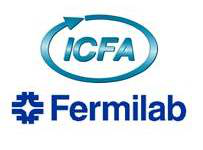-
General physics talks:
- What the LHC can/cannot do for determining the properties of the Higgs
- The merits of each type of Higgs factory from a physics point of view
- How many Higgs will be produced per year? – Requirements of beam energy and luminosity
-
Issues to compare between linear and circular Higgs factories:
- Integrated luminosity vs. Ecm
- Number of experiments a given facility can serve
- Energy spread, energy calibration and reproducibility (systematic uncertainly in Ecm)
- Polarization (longitudinal only?)
- Experimental conditions (background problems)
- Maturity of each technology
-
e+e- collider:
- e+e- physics for studying the Higgs (including CLIC and ILC performance at the ZH threshold)
- Description of linear e+e- colliders (ILC, CLIC, SLC)
- Description of circular e+e- colliders (LEP3, TLEP, SuperTristan, Fermilab site-filler)
-
Limits of a circular collider:
- Beamstrahlung and beam-beam tune shift
- Synchrotron radiation and rf
-
Muon collider:
- Muon physics for studying the Higgs
- Description of a muon collider
- How close is a muon collider to reality? (key R&D and timeline)
-
γ-γ collider:
- γ-γ physics for studying the Higgs
- ILC-based γ-γ collider
- CLIC-based γ-γ collider
- How close is a γ-γ collider to reality? (key R&D and timeline)
14–16 Nov 2012
Fermilab
US/Central timezone
Contact: Cynthia M. Sazama
Notes:
